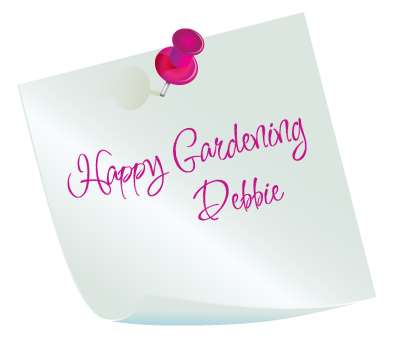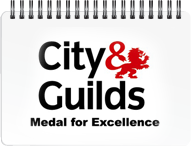Late Summer Bloomers
September 3, 2014 7:47 am Leave your thoughtsLast month our village held its ‘OpenGardens’ event. For the first time in, I believe, 15 years of holding various events, the weather was not so kind to us. In the morning it was abysmal with torrential downpours. It was looking unlikely that it would clear up in time for anyone to visit the gardens. It did manage to brighten up in the afternoon and despite a low turnout in numbers the takings were very respectable. Thank you to all those who braved the weather to support our event.
‘Cheers’ A Pimms with friends
Often at these events the most common topic of conversation is how everything had been flowering its head off two weeks before.
For anyone who opens their garden to the public or for those of us who take part in shows and competitions, it’s always a job to know what will be looking good and when. What flowers in August one year, may not flower till September the next year. Plants that were looking good this time last year may have already gone over. As with everything in nature, it all depends on the weather.
Whilst putting this piece together I had an email reminder from my local Horticultural Society. As luck would have it the guest speaker at the forthcoming meeting was Jonathon Heath of Brentford Manor in Evesham. His talk was on ‘Late Summer Colour’ and very interesting it was too!
Below are a few of the plants that were performing well in August this year after a fairly hot, dry summer. There are also a few suggestions for others to take you through to autumn, some of which were inspired by Jonathans talk.
Some Late Summer Bloomers for the bees
It’s not just about colour, flowers that bloom later in the year are a life line for wildlife. As Keats so beautifully puts it ‘ later flowers for the bees, until they think warm days will never cease’.
Sedum with bees
Most Sedums, particularly the taller varieties will benefit from the Chelsea Chop. Details of how to do this can be found on the RHS website https://www.rhs.org.uk/advice/profile?pid=594
Stipa sedum and eryngium
This is not just a good looking combination, although the Stipa gigantia adds wonderful movement to the border and catches the sunlight beautifully. It also contains a number of Sedum and Eryngium to keep the bees happy for some time.
Hydrangeas have been flowering their heads off this year and will continue to look good into the winter if left to dry on the plant. If you wish to dry them to use in floral arrangements, cut them when they still have good colour and stand in a vase of water to dry slowly.
It seems to be a fantastic year for the Hollyhocks. It appears that everywhere I go they are towering over the borders and growing out of any available crack, be that at the foot of a wall or between buildings and pavements. They are real opportunists.
If your preference is for hot colour schemes there is plenty of choice in the autumn palette. A few of Jonathon’s suggestions were Echinacea ‘Tomato Soup’, Rudbeckia ‘Golstrum’ and R.’Deamii’.
For a lovely warm glow, I don’t think you can beat Heleniums, have a feeling the bees agree. The secret to keeping them flowering is regular deadheading. Jonathon also covered some of the less hardy performers for the late season border. These included Dahlias, Salvias and Diascia. I’m not a great fan of plants that require any faffing i.e lifting, moving indoors over winter or remembering to mulch but the variety of forms and colours may be worth the effort if you have the time. Maybe when I retire I might consider a Dahlia or two, D. ‘Arabian Night’ did catch my eye as did the D. Bishop series.
In the shadier areas of the garden my ferns are making a splendid backdrop to the white flowers of my Aster divaricatus (Wood Aster), Lysamachia cletheroides (Chinese Loostrife) and Japanese Anemones (Wind Flowers), which brighten any border.
Another suggestion for a shadier border is Aarum italicum mamoratum (Italian Lords and Ladies) its glossy berries are pictured below (Caution these are poisonous).
Some more of my favourite late bloomers are Eupatorium and Verbena bonariensis both adored by butterflies and Perovskia (Russian Sage) with its spires of blue flowers, very noticeable in gardens at this time of year.
Still Looking Good around the Garden
In the Herb garden the bronze fennel is towering gently with its delicate foliage and froth of yellow flowers. The Hyssop is starting to fade now but has put on a splendid show of bright purple/blue spires, also loved by the bees. The self sown Borage, Calendula, Californian poppies, Sunflowers and Nasturtiums are all still doing their thing and my Chives have started to flower again.
I have a reasonable crop of apples which have plumped up beautiful with the recent rain. Just need a little more sun to ripen them off.
I have had a profusion of blackcurrants and gooseberries. My summer Raspberries however did not perform as well as they have in previous years, similarly with my Strawberries, maybe just too dry. My autumn Raspberries however, having had the benefit of the recent rains, are absolutely laden but rarely do they make it as far as the kitchen.
As the flowers in the borders fade and the leaves begin to fall, the baton is taken up by architectural seed heads, coloured stems and berries but I think I’ll leave those for another time……











